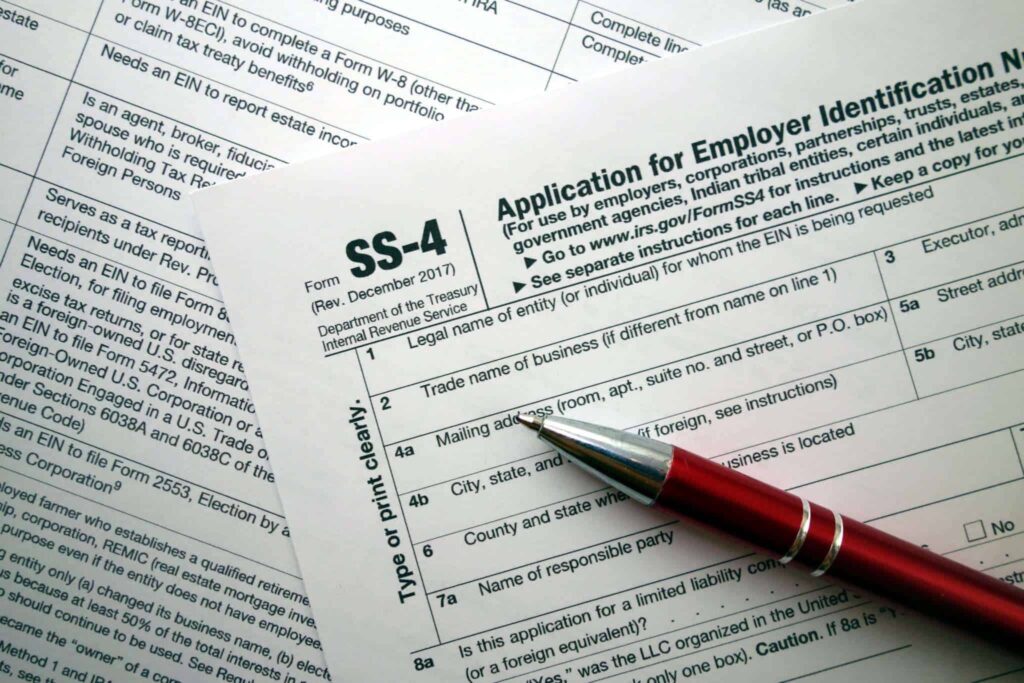Texas offers one of the most business-friendly environments to entrepreneurs. With favorable tax policies and minimal regulations, Texas provides an attractive environment for forming a Limited Liability Company (L.L.C.).
The overall steps of registering an L.L.C. in the U.S.A. have already been discussed. However, it is important to familiarize yourself with Texas-specific steps and procedures.
Step 1: Select a Name
The name of your business is a crucial aspect of its identity. It should reflect your brand and comply with the legal guidelines of Texas:
- Ensure the name is unique and distinguishable from existing business names in Texas.
- Even makes that sound too similar to existing businesses must be avoided. You can check availability on the Texas Secretary of State’s website.
- Include “Limited Liability Company” or abbreviations like “L.L.C.,” “L.L.C.,” “Ltd. Co.,“ and “Limited Liability Co.”
- Avoid terms that could confuse your L.L.C. with a government agency (e.g., “F.B.I.,” “Treasury,” “C.I.A.”).
- Be mindful that certain words, like “Bank“ or “Insurance,“ may require additional paperwork or licenses.
Step 2: Hire a Registered Agent
Choosing the right registered agent is crucial for the smooth operation of your L.L.C. in Texas. A registered agent is a person or business entity authorized to receive legal documents for your L.L.C. This includes important paperwork like tax notices, legal summons, and compliance-related documents. The agent ensures that you are promptly informed of any legal actions or requirements.
The registered agent must have a physical street address in Texas and be available during normal business hours. This availability ensures that there is always someone present to receive important documents.
These services are especially useful if you don’t have a permanent physical office or prefer not to have your home address listed on public records. Alternatively, you can appoint yourself or a trusted individual as the registered agent, but they must meet the availability criteria.
Pro Tip: Consider using a professional registered agent service to maintain privacy and ensure that all legal documents are handled efficiently, allowing you to focus on growing your business.
Step 3: File the Certificate of Formation
A Certificate of Formation, or Form 205, is submitted to the Texas Secretary of State and includes essential details about your business.
The Certificate of Formation requires the following information:
- L.L.C. Name: Ensure it matches your selected name and complies with state naming requirements.
- Registered Agent: Provide the name and address of your registered agent.
- Governing Authority: Indicate whether managers or members will manage your L.L.C..
- Purpose of the L.L.C.: Although Texas allows a general purpose clause, you can specify the primary business activities.
- Duration: Specify if your L.L.C. will exist perpetually or for a limited duration.
You can file the Certificate of Formation online through the Texas Secretary of State’s website or by mail. The filing fee is $300.

Step 4: Obtain an E.I.N.
An Employer Identification Number (E.I.N.) is essential for your Texas L.L.C. The I.R.S. uses this unique 9-digit number to identify your business for tax purposes. Here’s why obtaining an E.I.N. is crucial:
- Tax Filing: Required for filing federal and state taxes.
- Bank Accounts: Necessary to open a business bank account.
- Hiring Employees: Essential if you plan to hire employees now or in the future.
- Credit Applications: Needed when applying for business credit or loans.
Important: Even if you don’t have employees, you’ll need an E.I.N. for various business activities.
Obtaining an E.I.N. is a straightforward process. You can apply online through the fastest method, the I.R.S. website, or by mail or fax. The online application typically takes only a few minutes, and you’ll receive your E.I.N. immediately upon completion.
Clear your doubts—here are common questions business owners have when starting an L.L.C. in Texas.
Do I Need an Operating Agreement?
While Texas law does not require L.L.C.s to have an operating agreement, it is highly recommended. An operating agreement outlines the ownership structure, management, and operating procedures of your L.L.C. This document is crucial for avoiding member disputes, defining roles and responsibilities, and ensuring smooth business operations. It also helps establish your L.L.C.’s credibility with banks, investors, and legal entities.
What If You Need To Amend Your Certificate of Formation?
If you need to amend your Certificate of Formation, Texas allows you to file a Certificate of Amendment with the Secretary of State. Changing key information like your L.L.C.’s name, registered agent, or management structure is necessary. The form can be filed online or by mail, with a filing fee of $150. Make sure to clearly state the changes and ensure all details are accurate to avoid delays or additional fees.
Cost To Set Up an L.L.C. in Texas
Setting up an L.L.C. in Texas involves several costs. The primary expense is the $300 filing fee for the Certificate of Formation. If you choose to hire a registered agent service, this typically costs between $100 to $300 annually. Additional costs may include legal fees for drafting an operating agreement and obtaining necessary licenses or permits for your business activities.
How Do I Make Changes in My Texas L.L.C.?
To change your Texas L.L.C., such as changing its name or dissolving the business, you must file the appropriate forms with the Texas Secretary of State. For a name change, file a Certificate of Amendment or Form 424 with a $150 fee. To dissolve your L.L.C., file a Certificate of Termination or Form 651 and pay the $40 fee. Additionally, you must file a Statement of Change of Registered Agent with a $15 fee if you change your registered agent. If you make a mistake during L.L.C. filing, you can file a Certificate of Correction or Form 403 with the Texas Secretary of State. This will also cost you a $15 fee.




